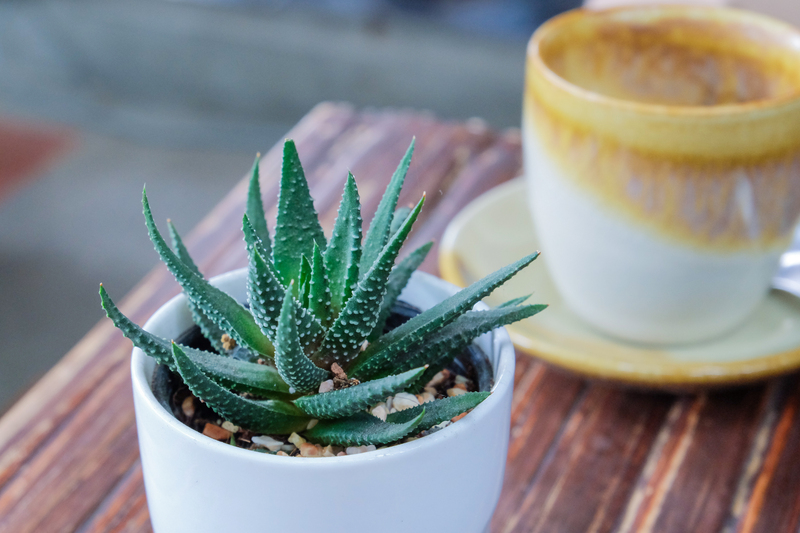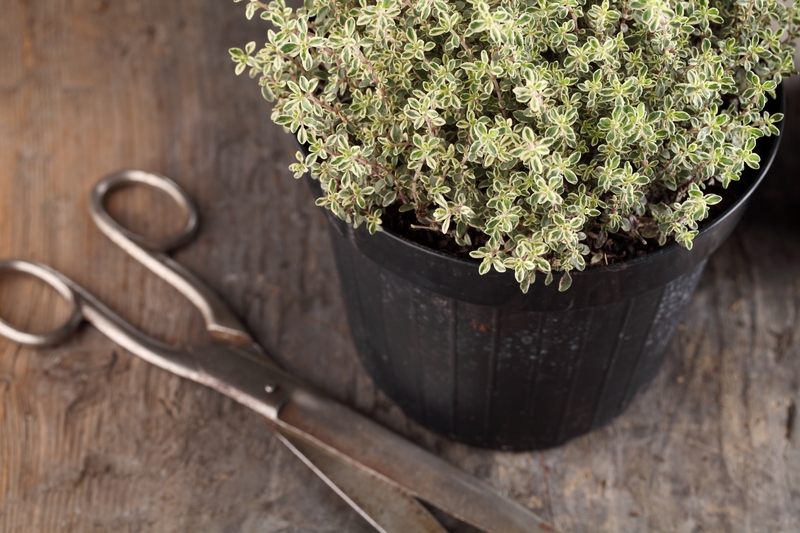Container gardening: Growing bounties in limited spaces
Posted on 12/09/2025
Container Gardening: Growing Bounties in Limited Spaces
Have you ever wondered if you could harvest plump tomatoes, crisp greens, or even fragrant herbs from a small balcony or windowsill? Container gardening unlocks a world of possibilities for anyone with limited outdoor space. Whether you live in a city apartment, a townhouse, or just want to maximize your backyard, cultivating a vibrant container garden brings fresh flavor, color, and nature closer than you might imagine.
Why Choose Container Gardening?
The beauty of growing in containers lies in its adaptability and convenience. Here's why more people are choosing container gardening, even when space isn't an issue:
- Maximizes Small Spaces: Perfect for balconies, rooftops, patios, decks, or even sunny windowsills.
- Mobility: Move your plants for optimal sunlight, shelter from weather, or simply to redesign your space.
- Pest and Disease Control: Isolated containers help minimize the spread of soil-borne issues.
- Efficient Resource Use: Targeted watering and fertilization reduce waste and environmental impact.
- Accessibility: Raises gardens to a comfortable working height for those with limited mobility.
- Creative Expression: Containers come in every size, shape, and color, letting your personality shine.

Getting Started: Understanding Container Gardening
Container gardening--sometimes called pot gardening or urban gardening--involves growing plants in pots, tubs, troughs, and other vessels rather than directly in the ground. This technique lets you:
- Control soil mix and quality
- Grow plants in places traditional beds can't reach
- Expand or rearrange your garden as needed
From vegetables and herbs to fruiting plants, flowers, and even edible shrubs, almost anything can be grown in a container with the right care.
Choosing the Best Containers for Gardening
The vessel you choose will directly affect the health of your plants and the success of your container garden. Here are essential factors to consider:
Material Matters
- Plastic Pots: Lightweight, affordable, and retain moisture well but may degrade over time.
- Ceramic or Clay: Attractive and classic but can be heavy and prone to breaking. Terracotta dries out faster than glazed ceramic.
- Metal Containers: Modern and stylish but can heat up quickly, potentially stressing plant roots in full sun.
- Wooden Boxes: Natural look, insulates roots, but may rot unless treated and can be heavy.
- Recycled or Repurposed Containers: Buckets, baskets, crates--get creative! Just ensure there's adequate drainage.
Size and Drainage
- Bigger is generally better for roots--most veggies need at least 12 inches of depth.
- Always choose pots with drainage holes; soggy soil kills plants quickly.
- For deep-rooted crops (like tomatoes or carrots), use deeper containers for robust growth.
Picking the Right Soil for Container Gardening
Your plants rely on you for everything they need--especially soil. Garden soil alone is too dense for containers. For the best results in container gardening:
- Use a high-quality potting mix made specifically for containers.
- Consider blends with added perlite or vermiculite for aeration.
- Add compost or slow-release fertilizer to boost nutrients over the growing season.
Avoid using pure garden soil in pots--it compacts easily, blocks airflow, and invites pests or disease.
What Can You Grow in Small Spaces?
When container gardening in limited areas, you're not limited to just flowers. Here are some abundant bounties you can harvest from just a few pots:
- Herbs: Basil, parsley, mint, thyme, cilantro, chives, and more thrive in small pots, indoors or out.
- Leafy Greens: Spinach, lettuce, arugula, kale, Swiss chard--perfect for cut-and-come-again harvesting.
- Tomatoes: Dwarf, cherry, and patio varieties flourish in large containers with proper support.
- Peppers and Chilies: Another compact crop, with endless color and flavor varieties.
- Radishes and Carrots: Quick-maturing roots that suit deeper pots.
- Strawberries: Hang baskets or line steps for a cascade of sweet berries.
- Edible Flowers: Nasturtiums, pansies, and violas boost color and flavor in your garden or salads.
- Dwarf Fruit Trees: Apples, lemons, figs, or blueberries grow well in large tubs or half-barrels.
Tip: Compact, patio, or bush varieties are ideal for container gardens, designed to thrive in less space.
How to Grow Your Own Bounty: Step-by-Step Guide
1. Choose the Right Container Size
Every plant needs enough room to spread its roots and access nutrients. A tomato or pepper needs at least a 5-gallon pot, while greens and herbs get by with 6-8 inch deep containers.
2. Fill with the Perfect Potting Mix
Layer the bottom with small stones for drainage if needed. Fill with a light, airy potting soil--never heavy or compressed.
3. Plant Seeds or Transplants
Sow seeds according to package instructions or set transplants in, gently firming soil around their roots.
4. Water Wisely
- Container soil dries quickly! Water when the top inch feels dry.
- In hot weather, check daily--some pots may need water morning and evening.
- Use a saucer to catch excess moisture, but never let pots sit in waterlogged trays for long.
5. Feed the Soil
With each watering, nutrients wash away faster in container gardens. Add a balanced, slow-release fertilizer or liquid feed every 2-4 weeks, following label instructions.
6. Provide Support and Pruning
Climbing plants like cucumbers or beans will need stakes, cages, or a trellis. Pinch back leggy herbs or greens to encourage bushy, abundant growth.
7. Monitor for Pests and Diseases
Keep pots tidy, remove debris, and check leaves for trouble. Isolate affected plants to avoid spreading issues.
Creative Container Gardening Ideas for Small Spaces
When space is scarce, look up, under, and all around for innovative container gardening solutions:
- Vertical Gardens: Wall-mounted planters, shoe organizers, or stacked pots let you grow up, not out.
- Hanging Baskets: Free up surface space and create visual interest. Great for trailing strawberries, flowers, or small peppers.
- Rail Planters: Attach boxes or pots to balcony railings for efficient use of edge spaces.
- Tiered Stands: Display herbs or compact veggies on multi-level plant stands or shelves.
- Window Boxes: Perfect for shallow-rooted edibles or bursts of annual color.
- Repurposed Objects: Think creatively--old boots, buckets, teapots, or drawers can become personalized planters.
With a little imagination, almost any container can become a miniature oasis overflowing with green abundance.
Caring for Your Container Garden Year-Round
Seasonal container gardening means adapting your care routine to changing weather:
- Spring: Refresh soil, fertilize, and start planting early crops like lettuce, peas, and spinach.
- Summer: Water deeply and frequently, mulch surfaces to reduce evaporation, and shade tender plants as needed.
- Autumn: Sow cold-tolerant greens, clean out spent annuals, insulate pots for lingering harvests.
- Winter: Move delicate containers indoors or to protected spots; overwinter dormant perennials in sheltered garages or sunrooms.
Tip: Some containers may crack in freezing weather. Choose frost-resistant pots or wrap in burlap for added protection.
The Benefits of Container Gardening in Small Spaces
Beyond convenience, container gardening delivers an impressive harvest--and much more:
- Fresh, Homegrown Produce: Enjoy fresh-picked flavor and reduce your reliance on store-bought greens and herbs.
- Less Maintenance: Weeds are rare, pests are easier to spot, and you control the environment.
- Flexible Design: Rearrange pots for aesthetic appeal, improved sunlight, or social gatherings.
- Educational Fun: Involve kids or beginners in hands-on growing, life cycles, and healthy eating.
- Stress Relief: Tending leafy greens or fragrant herbs brings calm to busy urban life.
Even a handful of containers can yield surprising quantities of food, beauty, and satisfaction.
Common Challenges and Mistakes in Container Gardening
Stay ahead of issues with these container gardening tips:
- Overwatering: Roots drown quickly if containers lack drainage--always check for holes and let excess water escape.
- Underwatering: Small pots dry out in hours, especially in sun or wind. Mulch and consistent checks keep soil just right.
- Wrong Plant Choices: Avoid full-size crops (like large corn or sprawling squash) in tiny containers--stick to compact varieties instead.
- Inadequate Sunlight: Most edibles need 6+ hours of direct light daily. Rotate containers or choose shade-tolerant greens for less sunny spots.
- Neglecting Fertilizer: Container soil leaches nutrients rapidly--regular feeding is essential for lush, productive growth.

Frequently Asked Questions
Can I use any container for growing vegetables?
Almost any container can work, as long as it's deep enough for roots, has drainage holes, and is clean or food-safe. Avoid those that could leach chemicals (like some treated woods or painted metal).
How often should I water a container garden?
Check the soil daily; in hot or windy conditions, you may need to water once or twice a day. It's better to water deeply and let the top inch dry out between waterings than to keep soil constantly wet.
What is the best fertilizer for container-grown plants?
A balanced, slow-release fertilizer or an organic liquid feed applied every few weeks keeps container plants healthy. Always follow package guidelines and adjust for specific crops.
Can I re-use the soil from last year?
You can re-use some potting soil, but it's smart to refresh it with compost or new mix and remove any roots or debris to prevent disease buildup.
Embrace the Bounty: Container Gardening Success Stories
All over the world, urban gardeners are harvesting tomatoes from fire escapes, herbs from windowsills, and lettuce from rooftop planters. In just a few square feet--or even a single sunny corner--you too can enjoy the pleasures and productivity of container gardening.
Remember: Whether your dream is pots overflowing with cherry tomatoes, planters of vibrant greens, or simply fragrant herbs at arm's reach, container gardening truly lets you grow a bounty in limited spaces.
So grab a pot, some soil, and a packet of seeds--and start cultivating your own little Eden, wherever you call home!

